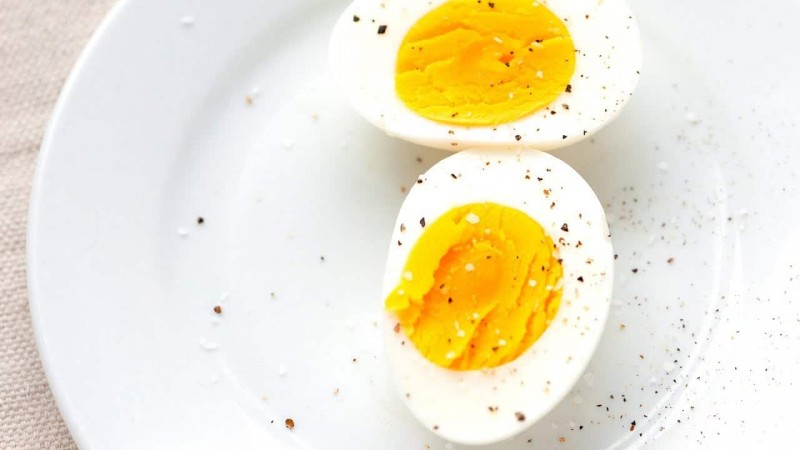
Boiled eggs are a staple in many households, whether for breakfast, salads, or snacks. They're packed with protein and nutrients, making them a healthy choice. However, there's one aspect of boiled eggs that can be a bit frustrating: peeling them. The difficulty of peeling boiled eggs has left many egg enthusiasts pondering solutions. In this article, we'll uncover a method that can make this task a breeze.
Understanding the Boiled Egg Dilemma
The Problem with Peeling
Peeling boiled eggs is often where the trouble begins. The shell clings stubbornly to the egg, leading to uneven results and, in some cases, wasting the precious egg beneath.
Boiled eggs are a versatile ingredient, but many find themselves frustrated when it comes to peeling them. The problem is simple: the shell can be incredibly stubborn. This stubbornness often results in uneven peeling and occasionally even damage to the egg itself.
Common Peeling Methods
There are several traditional methods for peeling boiled eggs, but not all of them yield satisfying results. Some of these include:
Rolling the Egg
One common approach involves gently rolling the boiled egg on a hard surface to create cracks in the shell. While this method can be effective, it's not foolproof. A frequently used method for peeling boiled eggs is the rolling technique. In this approach, a boiled egg is rolled gently on a hard surface to create cracks in the shell. The idea behind this is to weaken the shell's grip on the egg's surface, making it easier to peel. However, this method is not always guaranteed to produce the desired results.
Tapping the Egg*
Another method is tapping the egg all over with a spoon or a hard surface to create small cracks in the shell. But even this technique can sometimes leave you with a less-than-perfect peel. Tapping an egg with a spoon or on a hard surface is another technique frequently used to tackle the peeling challenge. The idea is to create a series of small cracks in the shell, theoretically making it easier to peel. However, like the rolling method, it's not a foolproof solution and can often lead to a frustrating peeling experience.
Peeling Under Running Water*
Peeling eggs under running water can help wash away tiny shell fragments, but it might not completely solve the peeling problem. Peeling boiled eggs under running water is a method employed to wash away any tiny shell fragments, potentially making the peeling process smoother. While this approach can be somewhat helpful, it may not entirely eliminate the challenges of peeling boiled eggs.
The Game-Changing Method*
Now, let's delve into the method that can revolutionize the way you peel boiled eggs.
The Ice Bath Method*
This ingenious approach involves an ice bath and a few simple steps:
The first step is to boil the eggs, following your usual method. Whether you prefer to bring them to a boil in the pot or use a precise timer, the initial cooking stage remains the same.
The key to this method is rapid cooling. As soon as your eggs are done boiling, swiftly transfer them to an ice bath. An ice bath is created by filling a bowl with a mixture of ice and water. The idea is to expose the boiled eggs to a sudden drop in temperature.
The eggs need time to chill in the ice bath. Allowing them to soak in this icy environment for approximately 10-15 minutes is crucial. During this time, the eggs will cool down rapidly.
After the cooling process, it's time to crack and peel the eggs. Begin by gently tapping the boiled egg on a hard surface to create small cracks in the shell. It's often recommended to start peeling from the larger end of the egg, where the air pocket is typically located.
The Magic Behind the Method*
The secret behind this method lies in thermal shock. When you transfer the hot eggs to an ice bath, the sudden change in temperature causes the egg whites to contract slightly. This separation between the egg whites and the inner membrane makes peeling much easier.
Now, let's demystify why the ice bath method is so effective. It all comes down to science—thermal shock. The rapid transition from hot to cold when the eggs hit the ice bath causes the egg whites to contract. This contraction results in a slight separation between the egg whites and the inner membrane, making the peeling process significantly easier. In conclusion, peeling boiled eggs can indeed be a challenge, but the ice bath method provides an effective solution. By following these steps, you can enjoy perfectly peeled eggs without the frustration. Say goodbye to stubborn eggshells and hello to hassle-free peeling!
In the realm of boiled eggs, peeling has long been a source of consternation. The stubborn grip of the shell often leaves egg enthusiasts exasperated. Traditional methods like rolling and tapping can help, but they are far from foolproof. That's where the ice bath method steps in, transforming the peeling experience. By using the ice bath technique, you can enjoy flawlessly peeled eggs with ease. The beauty of the ice bath method lies in its simplicity and the science behind it. Boiling the eggs is a standard process, but the magic happens when you transfer them to an ice bath. The sudden temperature change causes the egg whites to contract, creating a gap between the egg whites and the inner membrane. This separation is the key to easy peeling. So, the next time you embark on a culinary adventure that involves boiled eggs, don't let the peeling process deter you. With the ice bath method, you have a reliable solution at your fingertips. It's a culinary hack that can make your breakfast, salads, and snacks all the more enjoyable.
Eating not only pizza but also oregano is very harmful, know which diseases are the cause of it